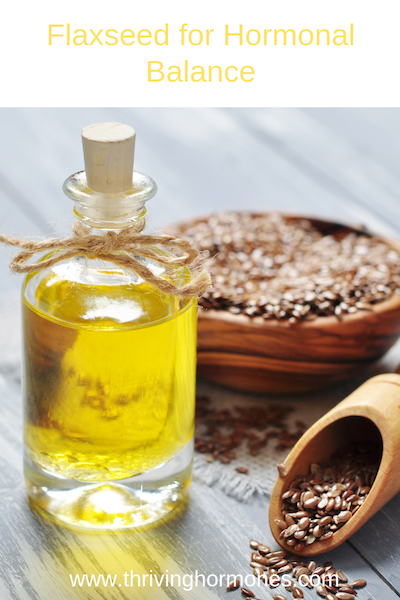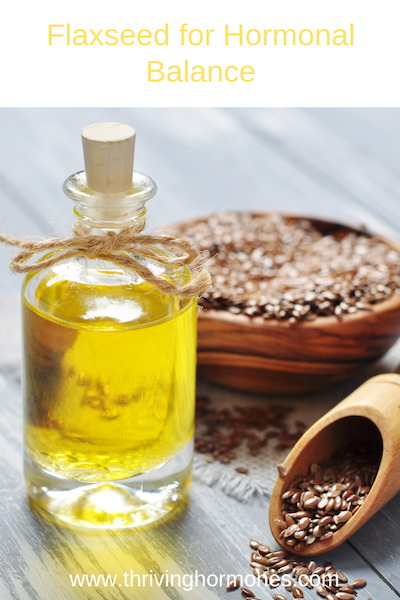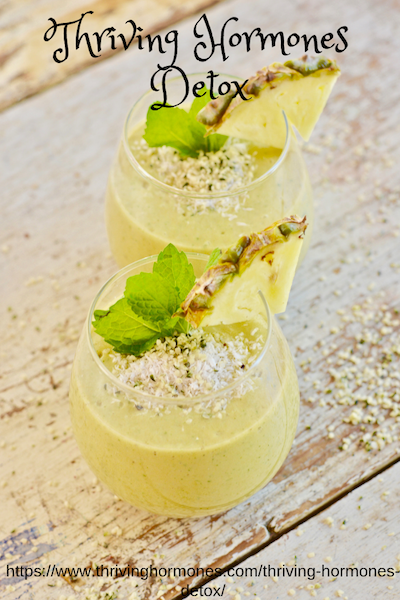Flaxseed for Hormonal Balance
Flaxseed, which has a Latin name Linum Ustatissiumum (Latin meaning instrumental) has been around for centuries. Women were the first people who mainly used it to suppress their naturally menopausal effects. The plant stem that was used then is still in the industry as a source of fiber with great durability and strength. It was introduced in America by colonists with an intention of producing fiber. Flax plant was used mainly for fabrication of clothes by applying linen and papers, while flaxseed oil and its sub-products are widely utilized in the formulation of animal feed. There is a difference in terms in that flaxseed refers to when it’s used as human food while linseed refers to when used in industry and for feed purposes.
Flaxseed is mainly cultivated in Canada, or North Dakota in farm that appear just as pretty as purple flowers. Flowers then become pods each containing from six to eight flaxseeds. The seeds are then shaken out of the pod. This majorly is done domestically by women with hormonal imbalances.
Origin of a Bad Reputation
The background of a bad reputation for flaxseed generated from bloggers who claimed that it was “cancer-causing” due to the fact that it was “estrogenic.” But something estrogenic does not imply that it’s cancer causing. This thought could have arisen from the realization that skincare products contained estrogenic substances such as parabens and phthalates, which is also called Xenoestrogens.
It was an oversimplification, since the naturally occurring plant estrogens cannot be compared to the synthetic estrogen. This makes it of utmost concern to check where you get your information. Doing a medical search to identify harmful effects of flaxseed on women proves that such claims cannot be verified therefore have no adverse effects when used by humans. Although a small portion of people show side effects when they use this food. It’s therefore very important to determine if you are allergic to flaxseed before you start using it.
Flaxseed Composition and Usage Proportions
Flaxseed is an estrogen-containing food and can prevent reversing signs of estrogen fast and efficiently. But this estrogen dominance is not to deter women from taking plant-based estrogens, as they are required for nourishing skin and hair, safe periods, good butt and breasts.
Women with estrogen dominance suffer because they don’t break down and excavate the estrogens. Flaxseed helps shift the metabolism of estrogens from unfavorable one to those that are favorable to the body. The synthetic estrogen, which should be avoided are the ones like Xenoestrogens, and are present in commercial products that mimic estrogens but only blocks the system.
Only in women with paradoxical response to flaxseed does estrogen dominance symptoms worsen. They are few and once one notices any significant change when taking they should stop immediately and look for supplement protocol. This is the only way of improving estrogen metabolism.
Mechanism of Action
Flaxseed contains a high amount of lignans, a polyphenol that is so high in phytoestrogen (“phyto” Latin for “plant” or “that has grown”). Polyphenols are naturally occurring micronutrients in plants with medicinal properties. Some plants that produce polyphenols are such as apples (quercetin), berries and chocolate (catechins), flaxseed (lignans), wine and blueberries (resveratrol) and turmeric has curcumin.
Phytoestrogens are grouped in lignans like enterolactone and enterodiol, isoflavones including genistein, daidzein and biochanin and coumestans. Soy contains genistein and daidzein.
The large intestines contain some bacteria that metabolize plants lignans into enterolactone a bioactive form of phytoestrogen.
Enterolactone binds to estrogen receptors blocking and estrogen, and this results in reduced growth of estrogenic cancers.
These lignans act as weak estrogen agonist (promoter), partial agonist or antagonist that block to endogenous estrogen and Xenoestrogens.
Therefore, flaxseed acts as an estrogen binder agent, and this implies that it is an adaptogen making the seed adapts to body needs, that either amplifies or blocks the action of as per body requirement. This has enabled it to be used by both women on menopause or post-menopause and naturally increasing estrogen levels to those with menstruation-related problems. The high percentage of women experience epical estrogen and don’t know it. (What it is) apical dominance and what are estrogenic cancers.
The most effective way to use flaxseed is through the seed rotation method. Women using this method to control epical estrogen have recorded reduction of hot flashes, none or fewer night sweats, less PMS( such as bloating, pain, food swings), uninterrupted sleep, regular periods and weight control.
Healing Properties of Flaxseed
Research shows that it is beneficial to women experiencing PMS up to those with post-menopausal benefit from taking flaxseed. This is seen in:
- Estrogen dominance. This is seen through symptoms such as irregular periods, massive flows, terrible PMS (bloating, moods, pain, energy, headaches), fibroids, endometriosis, breast lumps, Thyroid Nodules, fibrocystic and painful breasts, low thyroid, hair loss and brittle hair, weight gain around the hip and thighs and water retention and finally cellulite.
- These are caused by how a woman breaks the estrogens and being in too much amount. Usually, there is too much estradiol E2 as compared to estrone E1 and estriol3. Estrone gets broken down to 2, 4 and 16 hydroxyestrone – 2 is protective where else 4 and 16 hydroxy estrone are antagonistic and cause symptoms of estrogen dominance.
Flaxseed, usually bind unconjugated estrogen in the intestines and excreted in the stool. It also lowers the intestinal b-glucosidase activity and therefore lowering estrogen by conjugation of estrogen and reduced reabsorption.
Flaxseed also inhibits the activity of aromatase, therefore minimizing the conversion of androstenedione and testosterone into estrogens in breast cells and fat, and decreased menstrual cycle. Also, it results in reduced anovulatory cycles a reflection of improved ovarian action.
Research has also shown that flaxseed helps reduction of thyroid cancer, alleviates PMS, as well as reducing of fibroids in young women and it can improve fertility.
Menopause and Post-Menopause
Flaxseed is employed as an adaptogenic receptor in applied in menopause and post-menopause. Citations include lowering the hot flashes and vaginal dryness, then enhanced cholesterol of the blood.
As an Anti-Carcinogenic
Cancer that is estrogenic related includes ER+ breast (estrogen receptor positive), uterus cancer, cancer of the ovary, thyroid and cancer of the lungs. Flaxseed prevents this through its adaptogenic quality. Flaxseed also greatly helps in the reduction of thyroid cancer
- Flaxseed reduces tumor growth and also strengths the effects of Tamoxifen: Flaxseed was able to show the growth of breast cancer that is mainly caused by human estrogen and even made the tumor-inhibitory effect of TAM at both E2 high levels and low levels, too.
As a Fiber
Flaxseed is rich in both water-soluble and water-insoluble fibers. The insoluble fiber sweeps along digestive track, removing debris via the column. These include metabolized and harmful hormones. It adds bulk to stool for natural excretion. This eases chronic constipation in women. The insoluble fiber is also responsible for maintaining balance in blood sugar level.
- Soluble fiber form gel with water and makes one feel satisfied, it keeps sugar level and lower high cholesterol the body and is high in prebiotics which is what probiotics feed on. This study also states that in areas where the inhabitants experienced reduced intake of the dietary fiber, an estimated doubling of the entire fiber content from certain foods could greatly assist in lowering the effects of colorectal cancer. As a matter of fact, it can reduce it by an incredible 40%. This is one of the most beautiful things about the intake.
Anti-inflammatory
Flaxseed has high amount plant Omega 3. These are due to alpha-linolenic acid (ALA). The body converts ALA to the utilizable EPA and DHA insufficient presence of vitamin B1 and B6, Zinc and Magnesium. These EPA and DHA are anti-inflammatory agents.
Cardiovascular Application
Post-menopausal women have the intake of phytoestrogen that tends to be associated with a high metabolic rate in cardiovascular tissue. Another study also states that flaxseeds have LDL thus bad cholesterol-lowering properties and increases insulin sensitivity.
Rightful application of flaxseed
Always used the flaxseed seed form and freshly crushed into coffee or spice ginger. Crushing makes lignans more bioactive. Do not use flaxseed oils, as they do not contain lignans. Amount to be taken should be one or two tablespoons of freshly crushed flaxseed.
Flaxseed oil contains ALA needed for formation on anti-inflammatory molecules EPA and DHA.
Women can experience paradox response to flaxseed due to;
- Food intolerances or allergies – some people are allergic or do not tolerate flaxseed.
- Digestive sensitivity –others have severe digestive issues that lignans and fiber found in the seeds might be too much to endure.
- Gut bacteria – some people lack the bacteria responsible for converting lignans into its bioactive form enterolactone.
Flaxseed For Men?
Study has shown it that flaxseed might increase the risk of prostate cancer and infertility in men. This is one of the most serious effects that this substance is alleged to be capable of causing.
Flaxseed is beneficial to women especially during menopause and post-menopause except for the few who have paradoxical response due to its natural causes. Rumors have been spread in regards to the side effects of this substance without providing any tangible medical report. Women should incorporate flaxseed into their diet, as it has great medical benefits.
Chia Seed Pudding
Serves 1
1 cup unsweetened dairy-free milk
⅓ cup chia seeds
½ teaspoon cinnamon
½ teaspoon vanilla extract
1 tablespoon ground flax seeds
1 apple, chopped
2 tablespoons unsweetened coconut flakes
2 tablespoons goji berries
2 tablespoons walnuts
Mix the pudding: Add dairy-free milk, chia seeds, cinnamon, and vanilla to a bowl. Mix and allow the pudding to set for 5 to 7 minutes until it thickens. Top with apple, flax seeds, coconut flakes, and goji berries.
In Health,
Angie



